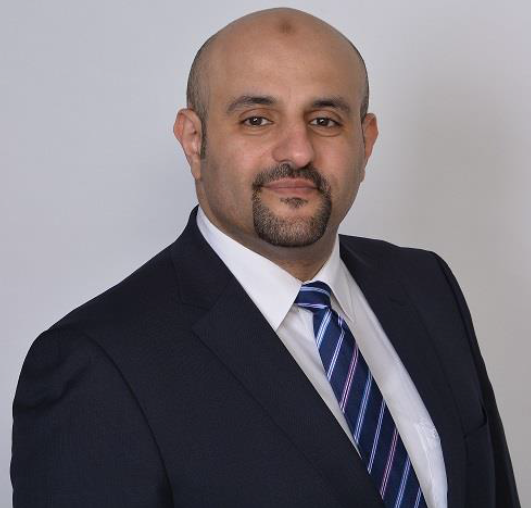On-Chip Electrochemical Impedance Spectroscopy: theory, design, implementation and application
By Prof. Dr.-Ing. Moustafa Nawito
Professor of Microelectornics
International University of Applied Sciences, Germany
Abstract
Electrochemical Impedance Spectroscopy (EIS) is one of the most important techniques employed in electrochemical analysis. It finds applications in a wide range of fields such as corrosion detection, biomedical sensors, battery and fuel cell development, surface characterization and physical electrochemistry, to name a few. The mean reason for its widespread adoption is that fact that it provides more information content than any other electrochemical techniques. Fully integrated on-chip EIS systems have contributed to the popularity of this technique and opened the door for new use cases. Portable and fully implantable biomedical devices for biomarker monitoring, smart Battery Management Systems (BMS) with Cell Monitoring Circuits (CMCs), distributed gas sensors and sensor array microsystems are some of the applications scenarios that rely on on-chip EIS.
The design and implementation of on-chip EIS presents interesting challenges from a circuit design perspective since it requires analog, mixed-signal and digital design techniques. This can be seen when reviewing the two techniques for on-chip EIS, which fall under two main categories, namely:
• Fast Fourier Transform (FFT) techniques: here, a broadband signal such as a Dirac pulse or a multi frequency wavelet is used to stimulate the System Under Test (SUT). The amplitude of the input must be small enough so as to induce a linear response from the system. The time domain response is measured, digitized and spectrally analyzed using an FFT algorithm.
• Frequency Response Analysis (FRA) techniques: here, the SUT is excited by a pure single frequency sinusoidal signal, where the amplitude is also kept low enough to produce a linear response. The frequency of the input sine signal is swept over the range of interest and the impedance is measured one frequency at a time.
Another aspect which makes the design of on-chip EIS interesting is the higher order of complexity of such systems. Typical integrated EIS blocks require sinusoidal signal generators, active filters, high precision amplifiers, analog multipliers, ADCs, digital control and post processing and other components. When considering that all of these circuits need to be tunable in order to operate on frequencies ranging from the milli-Hertz to several mega-Hertz, depending on the application, it becomes evident how carful system level planning is needed to fulfill the many conflicting requirements of the design space.
The aim of this tutorial is for the audience to gain a comprehensive overview of the topic of on-chip EIS with a specific focus on circuit design. In the first part relevant background theory and fundamentals are presented starting with a review on the concept of electrical impedance, the response of electrical systems to dynamic stimulus and the frequency analysis techniques. This is followed by a discussion of the foundations of electrochemical analysis where the importance of interfaces and the modeling of chemical processes as electrical analogs are presented, followed by presentation of the role of EIS and equivalent circuit models.The second part is dedicated to the design of fully integrated on-chip EIS systems, presenting FFT, FRA and other techniques. Finally biomedical applications and BMS systems are presented including design considerations and implementation of EIS for such systems.
Biography (Moustafa Nawito)
|
|
Moustafa Nawito was born in 1979 in Cairo Egypt. He attained his B.Sc. in Electronics and Electrical Communication Engineering from the faculty of engineering at Cairo University in 2002 and his M.Sc. in RF Electronics from the German university in Cairo in 2007. In 2017 he attained his Dr.-Ing. (Magna cum laude) in Microelectronics from Stuttgart University in Germany. In 2008 he was appointed as technical manager of the research center for digital broadcasting at GUC in cooperation with Fraunhofer Institute IIS in Erlangen Germany. During this time, he conducted several seminars and workshops on advanced ASIC design for industrial and academic partners. He also cofounded the “Center for Artificial Intelligence” and led a research team to win the international RoboCup scientific competition in 2009. He was also a co-founder of the Egyptian IEEE chapter for computational intelligence which received the best chapter award in 2009. In 2010 he joined the Institut für Mikroelektronik Stuttgart IMS CHIPS as a senior ASIC designer, where he was responsible for the development of novel circuits for camera systems, industrial sensors and biomedical intelligent implants for diagnosis and therapy for Bosch, Daimler, and other industrial clients. In addition, he was the scientific project director of various German and international research projects. In 2017 he founded the startup company Polymath Analog where he works in close cooperation with customers to provide innovative and reliable ASIC solutions for biomedical applications, IoT, Industry 4.0 and automotive, with emphasis on advanced analog design. He served as lead consultant for the development of a new generation of implantable image sensors for the company Retina Implant AG. In 2020 he joined the IU International University of Applied Sciences as a professor and founding chair of the electrical engineering program. He successfully led the development of the curriculum and the academic accreditation of the newly established department. He also serves as scientific reviewer on several committees for the appointment of new Professors. Prof. Nawito is the author of several publications, including the textbook "CMOS Readout Chips for Implantable Multimodal Smart Biosensors (Springer)". His research interests include the design of low power data converters, high precision sensors and organic and implantable electronics. He is a senior member of IEEE, VDE, OE-A and other technical societies and associations. In addition, he is an expert reviewer for the accreditation of engineering university programs for the EU and has conducted on-site reviews in 4 continents. |

